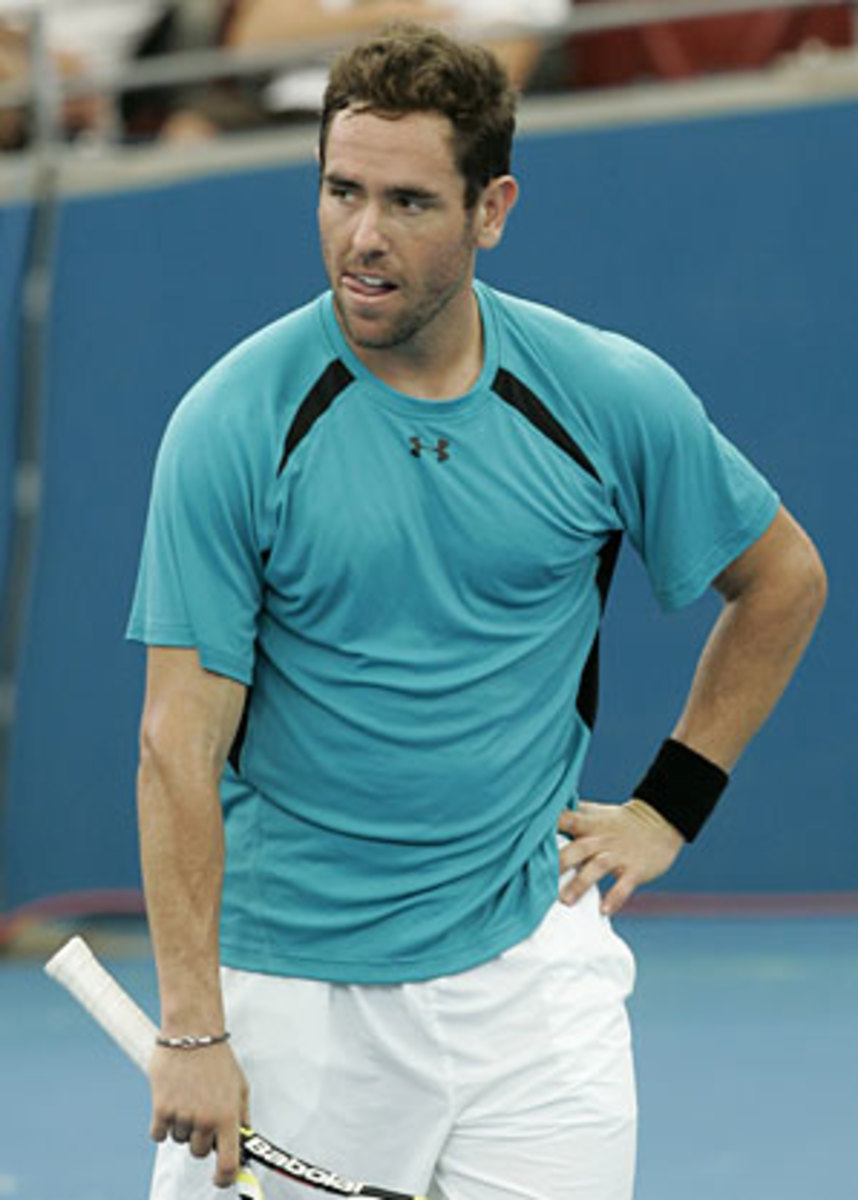Little sympathy for Odesnik after human growth hormone bust
Visibly angry, Andy Roddick suggested "they throw him out of tennis" and expressed his disgust at having "one jackass ruin it for the rest of us." James Blake, who once played World Team Tennis with Odesnik, said, "I'm glad they caught him," and one fellow player told TennisReporters.net, "I'm not surprised about Wayne. We all had suspicions about three to four years ago. His upper body got huge at one point, and his legs stayed skinny. He had zits all over his back. It's never worth all that risk."
He's out there alone now, likely to draw at least a two-year ban from the sport, and to some, it's almost a relief. This is not a big name. It's a player familiar only to those who follow the sport closely. If tennis wants to make a big statement here, demonstrating a zero-tolerance policy about performance-enhancing drugs, what better target than little-known Wayne Odesnik?
That's why I wonder if he might be just a little bit steamed. I doubt Odesnik expected much public support from the game's top players, but the prevailing sentiment seems to be, "Get him the hell out of our lives." If you're familiar enough with HGH to be importing it from one country to another, you undoubtedly have some tales to tell -- about the substance and how prevalent its usage may be on tour.
Odesnik's case aside, tennis is not a sport that traditionally invites such skepticism. Rumors have swirled around Rafael Nadal, but when I met him up close at Wimbledon a few years back, at the house his family was renting, he didn't appear overly muscled, grotesquely buffed-out or even physically imposing. It's a sport made for the toned-but-limber Roger Federer, or the wiry Roddick, with a long tradition of smallish superstars along the lines of Rod Laver, Jimmy Connors and John McEnroe.
Without question, things have changed in recent years. If players truly seek world-class endurance, they'll have to measure up to Nadal's relentless fury. There are more tall, huge-serving players than ever before, most notably Juan Martin del Potro, John Isner and Sam Querrey. Still, it's not a sport that has skeptics muttering, "That guy's gotta be on 'roids." It seems more plausible for players to experiment with HGH or EPO, the red blood cell booster known to increase one's stamina and said to be very popular among cyclists and track athletes.
I'm sure Odesnik's fellow players are appalled by his clueless approach to traveling (vials of HGH in your baggage?), as well as his choice of coaches. Guillermo Canas is the Argentinian player who drew a 15-month suspension in 2005-06 after testing positive for a diuretic considered a masking agent. So that's who you seek out? Come on, man, you avoid working with Canas just on principle. (And how weird, if not downright pathetic, that Canas announced his retirement on the same day the Odesnik story went public.)
At least we've got some serious talk, finally, about performance enhancers in tennis. If a player wants to dabble in cocaine -- the drug associated with the Martina Hingis and Richard Gasquet cases -- they're only putting themselves in position to be a complete mess. Andre Agassi wasn't going to get any benefit from crystal meth, not on a tennis court, although it sounds as if he was able to do some really maniacal house-cleaning.
With HGH, a wildly popular substance among athletes and one for which reliable blood tests are only recently being discovered, you have something that would seem to connect directly with tennis. But here's another thing to consider: When it comes to sports doping, the chemists are always ahead of the tests. It shouldn't be long before HGH is passé, rotting on the shelves of irrelevance along with Wayne Odesnik's reputation.
KEY BISCAYNE NOTES: Not that they've had an easy road so far, but Federer and Nadal are on schedule to contest Sunday's final, a long-awaited renewal of their storied rivalry. They haven't played since Federer upset Nadal on clay in the Madrid final last May (Nadal had won the previous five meetings) . . . Another match worth anticipating: Justine Henin-Kim Clijsters in the semifinals. Henin, who had to fight for every point in her epic 7-5, 7-6 victory over Elena Dementieva at the Australian Open, routed the Russian this week, 6-3, 6-2 . . . Ivan Ljubicic's memorable run didn't last long. He came up with back problems in his first-round match with Benjamin Becker and had to retire . . . It's becoming increasingly obvious that Melanie Oudin, shouldering the hopes of American women's tennis for the future, doesn't have the weapons to be a consistent threat. She went down quietly, 6-1, 6-2, to Vera Zvonareva . . . Querrey was hardly inspiring, on the court or afterward. He took a discouraging loss to Jeremy Chardy, 6-2 in the third, then complained, "I don't know what it is about this place. I can't play here. It's too windy." Then again, Querrey is hardly your typical American player. "I love clay," he admits. "It suits my game. I'm comfortable on it." If that's the case, his favorite season is about to begin . . . Andy Murray sounded like an emotional wreck after he lost to Mardy Fish in a swirl of errors and tactical mistakes, saying, "It's purely down to me, what goes on inside my head. No one else can make that better or change it." I like Murray, and the jolt of inspiration he has given British tennis, but I keep thinking about that item in a recent issue of Tennis magazine, noting that Murray's ex-girlfriend, Kim Sears, ended their four-year relationship in November '09 "after growing weary of his video-game addiction, up to seven hours a day." Whoa. If that's the case, just write him off altogether.





